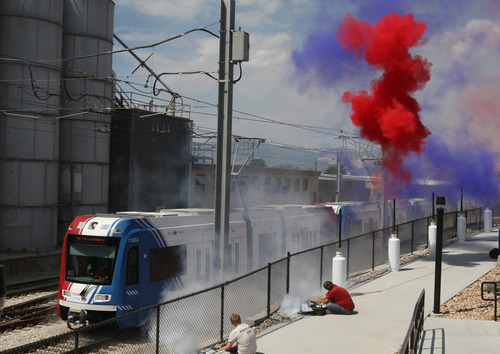This is an archived article that was published on sltrib.com in 2013, and information in the article may be outdated. It is provided only for personal research purposes and may not be reprinted.
For the last several years, it seemed, every time a couple of Utah Transit Authority board members so much as nodded at one another, bus and rail fares went up. Until the cost of riding a UTA vehicle to work became one of the highest in the country.
But the new 2014 proposed UTA budget released the other day anticipates no fare hike. Officials of the transit agency anticipate that while their costs will go up (whose aren't?), so will their income from current fare and tax rates.
That's good news all around. If the facts play out the way UTA's pencils hope, ridership will continue to increase, helping not only to pay for the expensive system we have built, but also to keep more people out of highly polluting automobiles.
The plan also includes adding more hours to TRAX service and more miles to bus service, the latter having been cut in recent years to help fund the former. The agency is also putting money into plans for a distance-based fare system, one that will charge riders based on how far they travel, instead of the current $2.50 flat rate for riding two blocks or 22 miles.
Next year will be the first full year for the system's airport and Draper TRAX extensions, as well as the soon-to-open Sugar House streetcar. If ridership turns out the way the agency's prognosticators predict, those lines will bring in enough money to not only keep the system running without a fare hike but also boost bus service, buy more natural gas-powered buses and pay off the system's TRAX debt faster.
Also on the UTA wish list: more use of a method called "bus rapid transit," starting, perhaps, in the Provo-Orem service area. That's kind of a hybrid of rail and bus, using vehicles with engines and rubber tires, which are a lot cheaper than rail miles, but which have dedicated lanes and even control over traffic lights so as to speed their way from point A to point B.
Innovations such as these are necessary if the UTA is to dig its way out of debt and fulfill its taxpayer-supported mission of both easing travel and lessening air pollution.
Trains are the Buck Rogers part of public transit. People like to ride them — if they are going to the right place at the right time. Buses, on the other hand, are the workhorses. Their use, and their utility to users of all neighborhoods and income groups, must be enhanced.
In the near future, UTA should stop measuring its success in rail stations opened and start measuring it in passengers satisfied.



